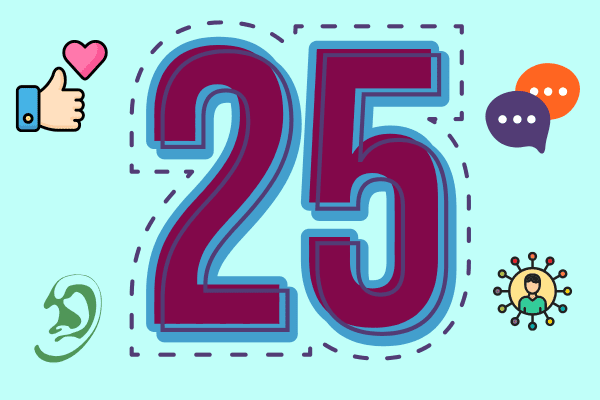I read with interest Will Thalheimer’s research on learning transfer.
And one of the best ways to completely absorb his research was to read it, write about it, and critically assess whether Sticky Learning ® is up to scratch. You can access his full report.
1. Learners who develop skills during training will be more successful in transfer.
This makes absolute sense. For example, in our feedback Masterclass for the P3 factory Learners’ training programme, we do this. By enabling each Learner to practice using the SBI (Situation, Behaviour and Impact) feedback model three times in the masterclass.
2. Learners who learn concepts during training will be more successful in transfer.
One of the models that we get the most interaction, is the trust model. This supports Will’s research.

Sticky Learning ® is 7 times more effective than 1-day training courses. Plus, you will get a Chain of Evidence proving your Return on Investment. Discover soft skills training that changes behaviours long term.

3. Learners who are motivated to apply what they’ve learned to their work will be more successful in transfer.
As part of our unique training method, Sticky Learning ®, our Learners complete an ILO. This is an Individual Learning Objective. It encourages the Learner to answer, ‘What do I want to get from the time I am spending learning?’. This gets their buy-in from the outset and increases motivation.
4. Learners are more likely to achieve transfer success if they have early opportunities to take what they’ve learned and utilise it in their work.
With one of our clients, AG Barr, they have a handbook of exercises to complete straight after their training. The handbook contains ‘Sticky Pieces’. These are individual exercises of about 20 minutes. From doing a piece of research to answering a quiz, to watching a video, etc. which inspires them to apply their learnings immediately.
5. A learner can learn poorly during training; but, if motivated and engaged in subsequent on-the-job learning, they can be successful in transfer.
Very true. I have heard about some of our Learners that for one personal reason or another, were not ‘up for it’ on the day. Yet, back in the workplace, seeing their colleagues make behavioural changes, they ‘jumped on the bandwagon’.
6. Far transfer rarely happens; only near transfer happens reliably. That is, learning tends to transfer to only those contexts already experienced or practised. So, generally, it is more fruitful to train people on specific skills and competencies rather than general ones.
The individual exercises that happen post classroom training, ‘Sticky Pieces’, and the team exercises that happen post classroom training, ‘Skill Pills’, are great examples of near transfer. Thus focussing on specifics, rather than general.
7. Learners who set goals to transfer what they’ve learned improve the likelihood they’ll achieve transfer.
We have seen Learners that set their own Individual Learning Objective (ILO) achieve this. And if they make it SMART, they’ll achieve an even bigger win (click on the image below for a full resolution version).

8. Learners who utilise triggered action planning will be more likely to engage in application activities than learners who have goals alone.
Could not agree more. In our, Learning To Learn training course we share how a Learner can get the most out of their learning journey. One of the examples of this is using our Keepers ® template to capture actionable take-aways.
9. Learners with supervisors who encourage, support, and monitor learning transfer are more likely to successfully transfer.
This also supports Gibb’s research of 2002. Essentially, if the learning transfer doesn’t involve the line manager, the learning will suffer. Our Learning To Learn for Line Managers helps them in how to support their Learners.
Will had this advice:
‘Workplace learning practitioners would be advised to encourage supervisor support in general, perhaps emphasizing such things as (1) ensuring their employees get the training they need, (2) demonstrating a belief in the value of the training, (3) knowing what the training is about, (4) talking with their employees before and after training, (5) ensuring employees have practice opportunities soon after training, and (6) monitoring progress after training while providing employees with appropriate coaching.’
10. Learners who work where there is a supportive transfer climate are more likely to successfully transfer.
Having a communications plan is essential to create the right climate. A reward and recognition programme, which reward the right behaviours, will help too.
11. It may take time to realise transfer outcomes. That is, they may not be fully realised right away.
1-day training courses do not work. To achieve real behavioural change, the learning programme must be a combination of classroom training, activities in the workplace, line manager discussion, and team activities. This takes time and a typical programme with us is +3 months.

12. The longer the time between training and transfer, the less likely that training – generated knowledge create benefits for transfer.
Agreed wholeheartedly. In Learning To Learn we encourage Learners to share one thing that they have learnt within 24 hours. Whilst this is not strictly learning transfer, it does ‘begin the journey’. And each journey begins with a first step.
13. The more success learners have in their first attempts to transfer what they’ve learned, the more likely they are to persevere in more transfer-supporting behaviours.
This makes perfect sense. Learners are taught to use one practical and simple tool that they try straight away. They are tempted to try many. We encourage them just to start with one. This enables them to ‘hone’ one skill, thus feeling successful as they leave the training.
14. When learners rate both the factors affecting transfer and the transfer outcomes — especially when ratings are gathered in the same context — significant biasing occurs, making transfer effects appear larger than they are in reality.
Learners are prone to wearing ‘rose coloured glasses’. This is understandable since they have invested their time and effort in their development, they want to be seen as successful. In our level 4 evaluation of the Chain of Evidence, Learners are asked for examples.
15. It should not be assumed that learners will maintain the same level of motivation (to apply what they’ve learned) throughout the learning-to-transfer process.
For some Learners, they need to, for example, reflect. This is where the follow-up activities are essential because they are another opportunity to engage the Learner.
16. Transfer can be influenced at different times during the learning-to-transfer process —most notably before, during, and after training.
- Before – Learning To Learn training course, and line manager support (why are they attending).
- During – Using mnemonics, espresso sessions, and plenty of practical application.
- After – Sticky Pieces, Skill Pills and again, line manager support.
17. While many transfer interventions have shown limited or weak results in the research literature, a large majority of the interventions utilized less than two hours of time. With such limited learner engagement, the weak results may be expected.
A combination of learning is the most effective; blended learning, or 70:20:10. Blended learning incorporates classroom training, coaching and practice.

Summary
Our unique training method – Sticky Learning ® – is achieving many of the learning transfer recommendations. This is very pleasing. The challenge is not to enhance it further, but to identify companies that are willing to let go of the traditional 1-day training course model.




